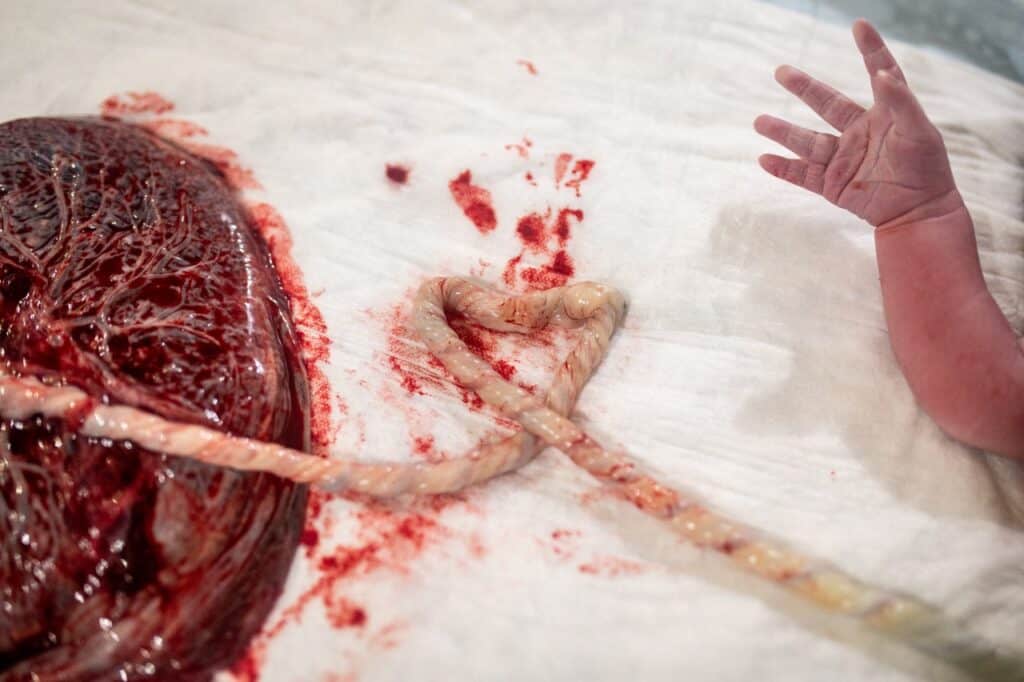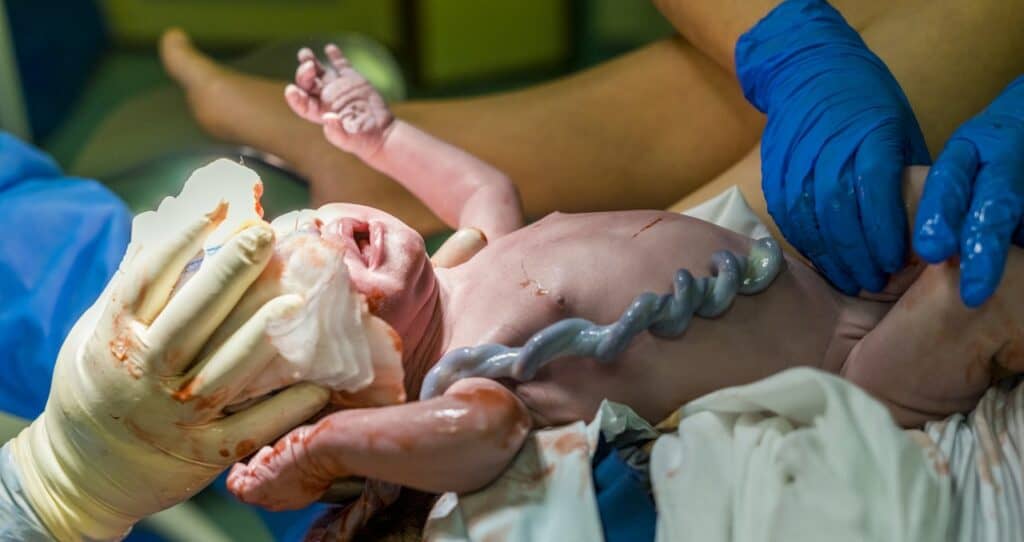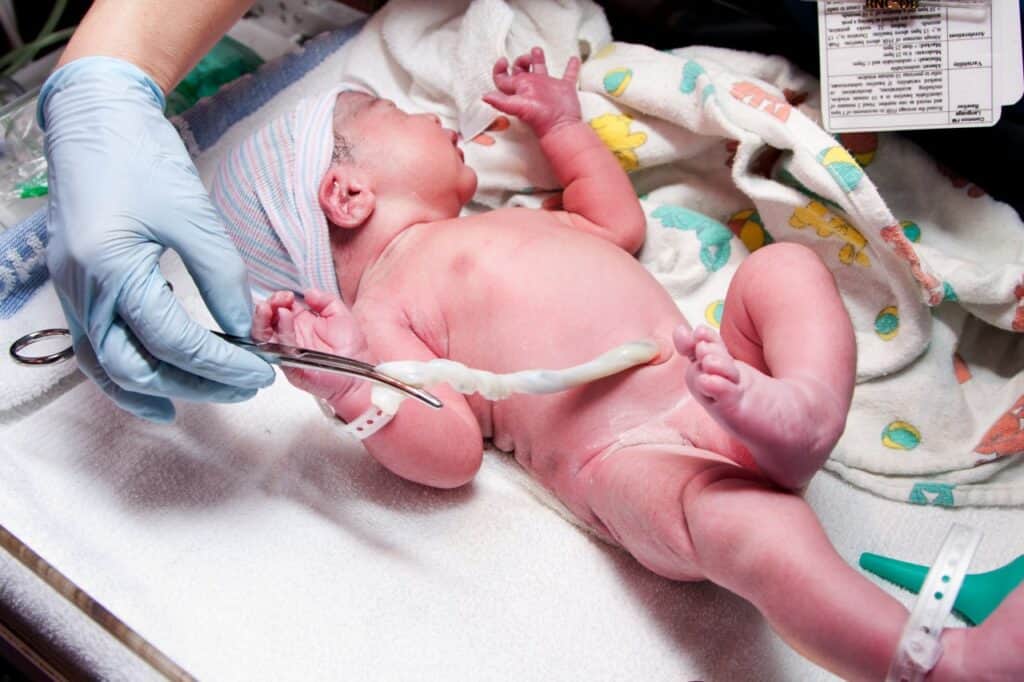Umbilical Cord Basics

Your Baby's Umbilical Cord
Your baby is part of a unit in your womb – the fetal-placental unit includes a placenta, amniotic sacs, an umbilical cord and a baby. Your baby is connected to the fetal side of the placenta via the umbilical cord, and the maternal side of the placenta is attached to your uterine wall. The cord is the delivery system for your baby to receive fresh blood, nutrients & oxygen from you throughout pregnancy.
After birth, they no longer rely on the placenta for survival so the cord stops functioning, even if we don’t cut it, it takes care of itself by closing off the vessels, drying up and falling off.
You or your partner cutting the cord can feel very symbolic as we sever their link between the womb world and extrauterine life.
Tips for Cutting the Cord
An umbilical cord is usually made up of 2 arteries, 1 vein and a fatty substance called Wharton’s jelly. This keeps the cord from kinking as your baby is growing and possibly playing with or getting wrapped up in the cord a bit. It also gives the cord a sturdy constitution and makes it a little harder to sever.
Most people feel a bit apprehensive about cutting the cord, but there are no nerve endings in it so it doesn’t hurt you or your baby. Your healthcare team gives guidance – they will put 2 clamps on the cord, hand you sterile scissors and show you exactly where to cut.

Anybody can cut the cord – moms, dads, siblings, grandparents, doulas or you can just leave it to the staff.
Newborns will have a little cord stump – basically dead, drying tissue, that falls off usually within 1-2 weeks and then voila, they have their cute little bellybutton.

When to Cut the Cord
The vessels in your baby’s cord will start to slowly shut themselves down once your baby is earthside and they begin using their lungs.
1/3 of your baby’s blood supply is still circulating through the cord and placenta so delaying the cut allows them to receive their own blood – termed physiologic, delayed or optimal cord clamping. Depending on the organization, this could be anywhere from 30 seconds – 5 minutes so check with your healthcare provider about what “delayed” means to them.

Cord Cutting Guidelines
American College of Obstetricians & Gynecologists:
- delayed cord clamping appears to be helpful for preterm and term babies
- increases hemoglobin levels at birth and iron stores within the 1st few months of life
- ACOG guidelines consider 30-60 seconds delayed
- delaying does not increase postpartum hemmorhage
American College of Nurse-Midwives:
- should be standard for preterm and term infants
- may be possible when the newborn needs extra assistance adjusting to life outside the womb
- ACNM defines delayed between 2-5 minutes
- delayed cord clamping doesn’t interfere with handling the placenta
